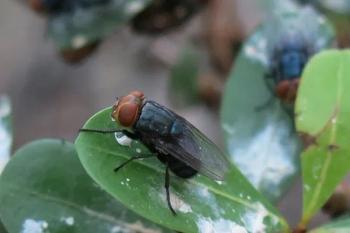
US-Mexico agreement allows screwworm eradication efforts to resume
The agreement also ensures ports remain open to livestock imports
Mexico has agreed to eliminate restrictions on USDA aircraft, and waive customs duties on equipment that is aiding in the campaign to prevent the spread of New World screwworm (NWS). The agreement announced by US Secretary of Agriculture Brooke Rollins on April 30, 2025, ensures ports remain open to livestock imports.1
“I am happy to share Mexico has continued to partner in emergency efforts to eradicate the New World screwworm. This pest is a devastating threat to both of our economies, and I am pleased to work together with Mexico in good faith to protect the livelihoods of our ranchers and producers who would have been hurt by this pest,” Rollins said in a news release.1
According to the USDA, NWS is a “devastating pest” that infests warm-blooded animals. This parasitic fly lays larvae that burrow into the flesh of living animals that include livestock, pets, wildlife, birds and, in rare cases, humans. These maggots cause severe wounds and complications that can lead to death.1,2
RELATED ARTICLE:
The new agreement was made after Rollins pushed for a resolution of port restrictions in a letter addressed to Mexico Secretary of Agriculture Julio Antonio Berdegué Sacristan on April 26, 2025.1 The letter outlined the negative impact on efforts to curtail the spread of NWS from restrictions for aircraft operated by the USDA that are “uniquely equipped to conduct the high-volume, precision aerial releases required to suppress and eliminate the NWS population” as well as “substantial import duties on critical aviation parts, dispersal equipment, and sterile fly shipments.
“These delays and costs not only disrupt operations but risk delaying aircraft deployment at the precise moment when rapid action is needed most,” according to the letter. “Time is of the essence. Every delay in granting full operational authority and eliminating customs barriers undermines our collective ability to carry out this emergency response.”
The letter from Rollins requested operational clearance for certain aircraft, import clearance and duty waivers for aircraft parts and other supplies related to the NWS eradication campaign, and a designated high-level point of contact that could work with the USDA to remove remaining regulatory and bureaucratic obstacles. The correspondence also threatened restriction on animal importation from Mexico including live cattle, bison, and horses if an agreement resolving the issues outlined was not made with the US by April 30, 2025.
According to the USDA, port closures will be revisited if the terms of the new agreement with Mexico are not upheld.1 “At USDA we are working every day to keep pests and disease from harming our agricultural industry. I thank our frontline USDA staff and their counterparts in Mexico for their work to ensure the screwworm does not harm our livestock industry,” Rollins said in the release.
Veterinarians can help manage the risk of screwworm infestation by continuing to prescribe year-round isoxazolines for indoor and outdoor pets, according to Christopher Lee, DVM, MPH, DACVPM, in a
Adult screwworms are the approximate size of a common housefly. They are identifiable by orange eyes, a metallic or green body, and 3 dark stripes on their backs, according to the USDA.2 Lee said NWS can also be identified by the “prominent hooks on its anterior end— imagine a vampire maggot.” He noted that although many maggots have hooks, they are large on NWS.3
Mammals and birds with screwworm larvae infestation may show signs that include irritated behavior, head shaking, and a smell of decay.2 Signs of infestation as well as evidence of fly strike and the presence of maggots in wounds should be reported by animal health professionals to state animal health officials and APHIS Area Veterinarians in Charge, and by animal owners to their veterinarian.2,3
References
- United States and Mexico reach agreement to resume eradication efforts on New World Screwworm. News release. USDA. April 30, 2025.
- New World screwworm. US Department of Agriculture. April 3, 2025. Accessed May 1, 2025. https://
www.aphis.usda.gov/livestock-poultry-disease/cattle/ticks/screwworm - Lee C. Screwworms: when the larvae don’t care about boundaries. April 11, 2025. Accessed May 1, 2025. dvm360.
https://www.dvm360.com/view/screwworms-when-the-larvae-don-t-care-about-boundaries
Newsletter
From exam room tips to practice management insights, get trusted veterinary news delivered straight to your inbox—subscribe to dvm360.






